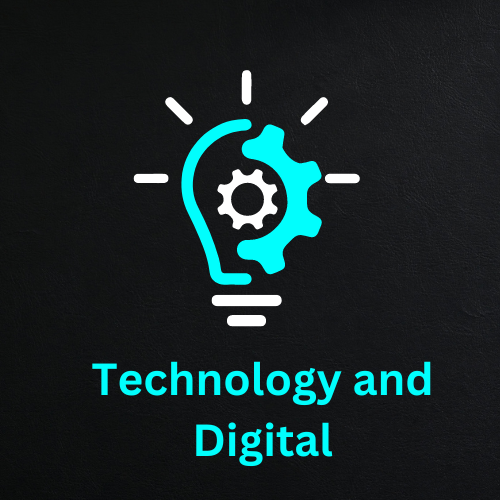
Android Technology
If you’re even a bit tech-savvy, you’ve probably heard about Android. It’s the operating system that powers billions of devices around the globe. From your smartphone to your smartwatch, Android is everywhere. But how did Android become such a significant player in the tech world, and what makes it so versatile and popular? Let’s take a journey through the world of Android technology and discover what sets it apart.
The Evolution of Android
Early Beginnings
Android’s story began in 2003 when Andy Rubin, Rich Miner, Nick Sears, and Chris White founded Android Inc. The initial goal was to create an advanced operating system for digital cameras. However, as the market for cameras started to decline, they pivoted towards mobile phones. In 2005, Google acquired Android Inc., which marked the beginning of Android’s journey as a mobile operating system.
Major Milestones
The first Android-powered phone, the HTC Dream (also known as the T-Mobile G1), hit the market in 2008. Since then, Android has gone through numerous updates, each bringing new features and improvements. From the introduction of the Android Market (now Google Play Store) to the advent of Material Design, Android has continuously evolved.
Current Status
Today, Android is the most widely used mobile operating system globally, with a market share that dwarfs its competitors. It powers a vast array of devices, from budget-friendly phones to high-end flagship models. Its open-source nature has allowed manufacturers to tailor the OS to their hardware, leading to a diverse ecosystem.
Android Architecture
Linux Kernel
At the core of Android lies the Linux kernel, which provides essential system functions like memory management, security settings, and process management. This kernel is the foundation that ensures Android runs smoothly and efficiently on various devices.
Libraries and Runtime
Above the Linux kernel are a set of libraries, including the Android Runtime (ART). These libraries provide the necessary APIs for the Android application framework, enabling developers to build robust and efficient applications.
Application Framework
The application framework offers a suite of tools and services to developers, allowing them to create innovative and user-friendly apps. This layer includes the Activity Manager, Window Manager, and other critical components that manage app interactions and user interfaces.
Android Versions and Their Features
Android 1.0 to 4.0 (Ice Cream Sandwich)
The early versions of Android focused on establishing a solid foundation. Features like multitasking, rich notifications, and home screen widgets were introduced, setting the stage for more advanced capabilities.
Android 4.1 to 6.0 (Jelly Bean to Marshmallow)
During this period, Android saw significant enhancements in performance, user interface, and functionality. Google Now, Project Butter for smoother performance, and the introduction of Material Design were some of the highlights.
Android 7.0 to 9.0 (Nougat to Pie)
These versions brought features like split-screen multitasking, improved battery life with Doze mode, and advanced notifications. The introduction of Google Assistant and machine learning capabilities also marked a significant leap forward.
Android 10 to 13 (Q to Tiramisu)
The latest iterations have focused on privacy and security, with features like Scoped Storage and enhanced app permissions. Dark mode, gesture navigation, and 5G support are other notable additions. Android 13, known as Tiramisu, continues to build on these foundations, offering even more customization and control to users.
Customizability and Flexibility
Custom ROMs
One of Android’s most beloved features is its customizability. Users can install custom ROMs like LineageOS or Paranoid Android, which offer additional features and optimizations not found in the stock version of Android.
OEM Customizations
Manufacturers like Samsung, OnePlus, and Xiaomi often add their skins on top of Android, providing unique features and a distinct user experience. Samsung’s One UI, for instance, focuses on ease of use and one-handed operation, while OnePlus’s OxygenOS is known for its near-stock experience and speed.
User Customization Options
Android allows users to personalize their devices to a great extent. From changing wallpapers and themes to installing custom launchers and widgets, the possibilities are nearly endless.
Android’s App Ecosystem
Google Play Store
The Google Play Store is the primary source for Android apps, offering millions of applications across various categories. It provides a secure and user-friendly platform for users to discover, install, and update apps.
Popular Apps and Services
Android supports a vast array of apps, including popular services like WhatsApp, Instagram, and Spotify. The flexibility of the platform has encouraged innovation, resulting in a rich ecosystem of apps that cater to every need.
Developer Opportunities
For developers, Android offers a robust framework and a large user base, making it an attractive platform for creating apps. With tools like Android Studio and Kotlin, developers can build high-quality applications that can reach millions of users worldwide.
Security and Privacy Features
Regular Updates
Google ensures that Android devices receive regular security updates to protect against the latest threats. Monthly security patches are rolled out to keep devices secure and up-to-date.
App Permissions
Android has a comprehensive permissions system that gives users control over what data and features apps can access. Users can grant or revoke permissions at any time, ensuring their privacy is protected.
Google Play Protect
Google Play Protect is an in-built security service that scans apps and devices for harmful behavior. It continuously monitors for threats and provides real-time protection to keep users safe.
Android Devices Diversity
Smartphones
Android powers a wide range of smartphones, from affordable models like the Moto G series to premium devices like the Samsung Galaxy S series. This diversity allows users to choose a device that fits their needs and budget.
Tablets
Android tablets, such as the Samsung Galaxy Tab series and the Lenovo Yoga Tab, offer powerful performance and versatility. They are suitable for both entertainment and productivity, providing a range of options for users.
Wearables
Android Wear OS brings the power of Android to wearable devices like smartwatches. Wear OS supports various watch faces, fitness tracking, notifications, and Google Assistant, making it a comprehensive platform for wearables.
Smart TVs and Other IoT Devices
Android TV extends the Android experience to smart TVs, offering a seamless way to stream content, play games, and access apps on the big screen. Additionally, Android is used in various IoT devices, from smart speakers to home automation systems, showcasing its versatility.
The Role of Google Services
Google Assistant
Google Assistant is a powerful AI-driven assistant that helps users with tasks, answers questions, and controls smart devices. Integrated deeply into the Android ecosystem, it enhances the user experience by providing hands-free assistance.
Google Maps
Google Maps is an indispensable service for navigation and location-based services. With features like real-time traffic updates, public transit information, and offline maps, it’s an essential tool for Android users.
Google Drive and Productivity Tools
Google Drive, along with Docs, Sheets, and Slides, offers a suite of productivity tools that integrate seamlessly with Android devices. These tools enable users to create, edit, and share documents on the go, enhancing productivity.
Performance and Optimization
Hardware Acceleration
Android leverages hardware acceleration to improve performance and efficiency. By offloading tasks to the GPU, Android ensures smoother animations and faster processing.
Battery Management
Battery life is a critical aspect of mobile devices, and Android includes features like Adaptive Battery and Battery Saver to extend usage. These tools help manage background processes and optimize power consumption.
System Performance Tools
Android offers various tools for monitoring and improving system performance. From built-in task managers to third-party apps, users can keep their devices running smoothly and efficiently.
The Future of Android
Upcoming Features and Improvements
Google continually works on new features and improvements for Android. From enhanced privacy controls to AI-driven functionalities, the future of Android looks promising with innovations that will further enhance user experience.
Expansion into New Markets
Android’s flexibility allows it to expand into new markets and device categories. We can expect to see Android powering more IoT devices, smart home systems, and even automotive systems in the coming years.
Innovations in AI and Machine Learning
AI and machine learning are becoming integral to Android, with features like predictive text, smart replies, and advanced photo editing. These innovations will continue to evolve, making Android smarter and more intuitive.
Comparison with Other Mobile Operating Systems
Android vs. iOS
While iOS is known for its seamless integration and premium experience, Android offers unparalleled customization and a broader range of devices. Each platform has its strengths, catering to different user preferences.
Android vs. HarmonyOS
Huawei’s HarmonyOS is a relatively new player, aiming to create a cohesive ecosystem across devices. While it shows promise, Android’s extensive app ecosystem and established user base give it a significant advantage.
Android vs. Windows Mobile
Windows Mobile struggled to gain traction and was eventually discontinued. Android’s success can be attributed to its open-source nature, robust app ecosystem, and continuous innovation, which set it apart from competitors like Windows Mobile.
Impact on the Tech Industry
Influence on Mobile Technology
Android has had a profound impact on mobile technology, driving innovation and setting standards for what users expect from their devices. Its influence can be seen in the adoption of features like app stores, touch interfaces, and mobile payments.
Contributions to Open Source
As an open-source platform, Android has contributed significantly to the open-source community. Developers can access the source code, contribute to its development, and create custom versions of the OS.
Shaping User Expectations
Android has shaped user expectations by continually introducing new features and improvements. From voice assistants to mobile gaming, Android has set benchmarks for what modern mobile devices should offer.
User Experience and Community
User Interface Design
Android’s user interface has evolved to become more intuitive and visually appealing. Material Design guidelines have helped create a cohesive and user-friendly experience across apps and devices.
Community Support and Forums
The Android community is vast and active, with forums, blogs, and social media groups dedicated to discussing tips, troubleshooting, and sharing customizations. This community support is invaluable for users and developers alike.
Feedback and Continuous Improvement
Google places a strong emphasis on user feedback, using it to drive continuous improvement. Regular updates and new features are often based on community suggestions, ensuring Android evolves in line with user needs.
Android technology has revolutionized the way we interact with our devices, offering a flexible, powerful, and customizable platform that caters to a diverse range of users. Its impact on the tech industry is undeniable, and with continuous innovation and a strong community, Android’s future looks brighter than ever.




